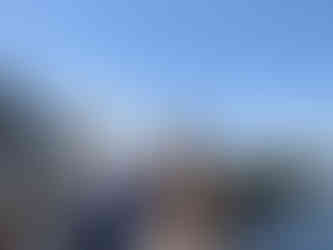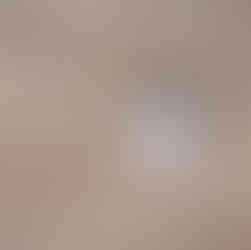Falling into Butterflies, Birds, and Falls
- jrycenga
- Aug 22, 2022
- 9 min read
Updated: Aug 23, 2022
Chapter Nine, Post-tour extension in northeastern Argentina, July 26-30

The opportunity to visit Argentina, however briefly, and to see the dramatic Iguazú/Iguaçu (Spanish/Portuguese spellings) Falls were what made me eager for the post-trip. Once there, though, what tipped the scales to make this more than just a touristic "add-on" was the fact that we were in yet another distinct habitat! After the Cerrado, Amazon, and Pantanal, we were now in the South American Atlantic Forest - a world with trees and foliage that seemed reminiscent of things I knew, and yet were still exotically different. The post-trip was a greater joy than I could have ever anticipated.

We left our hotel in Cuiabá at about 11:30 pm on July 25, flying from there to São Paulo on the ever-popular 1:30 am flight! Once in GRU (the main airport in São Paulo), we froze. I mean, this was the coldest airport stay ever! Fortunately, our four-hour layover was made better by more Brazilian pastries! On the connecting flight to Foz do Iguaçu, I got a window seat, so I was able to get some nice pictures from above.

Immediately I knew two things - we were in a new habitat, and work was far, far away. We were also in a new Brazilian state, however briefly - Paraná. I was determined to get a list, and so I did!

Due to bizarre regulations about Argentinian vehicles at the airport, we had to drive a short way and change vehicles. We parked in this lot, yet inexplicably, did not go into this Chocolate Caseiro! I suppose that's all for the best. Here, too, we met Rich's co-leader for this post-trip, J. Quillen Vidoz. As we approached the border, we first had to stop on the Brazilian side and officially leave the country we'd grown to love. We'd noticed a few birds, but this Black Vulture standing guard over the border station was the most dramatic (a legend in its own mind).
J. Quillen Vidoz; one of the first Argentinian trucks we saw, cautioning people to drive with care; the self-important Black Vulture (Coragyps atratus) at the border station.
Once in Argentina, we checked into our luxury hotel (this was no lodge), the Mercure. After lunch there, we went for some quick birding at the Jardín de Picaflores - Hummingbird Garden - located in the middle of the town. The light conditions - and my own incompetence - led to my pictures here being abominable. But the bright colors of the hummingbird feeders at least impart some dynamism to them!
Bananaquit (Coereba flaveola); Jardín de Picaflores
Swallow-tailed Hummingbird (Eupetomena macroura); Gilded Hummingbird (Hylocharis chrysura)

In the next (and concluding) chapter, I will reflect more on the overall highlights from the trip. But I already know that July 27 will have a prominent place in that story. Yes, it is the day we went to Iguazú Falls, but that's not the major reason why. It was the morning birding around Observatorio de Aves Daniel Pupi Somay (the Daniel "Pupi" Somay Bird Observatory) that made this a transcendent/immanent experience. Even at the time, I told Rich that our time along this half-mile of road edge was among the best birding experiences of my life. Here's why, expressed mathematically
New Country + New Habitat + (Life Bird Rarity x 2 [ the factor for Peggy-finding-the-rarity ] ) + (# of Life Birds) + Butterfly show + Sonic Joy + Scenic Water Feature [creek] + being-with-cool-people = 4+2+4+30+2+1+1+5 = 49

I am almost kidding with this. But it really did feel like a 49/50 kind of morning, with non-stop birding action. With two guides - Rich and Quillen - we really didn't/couldn't miss a thing. Everywhere we looked there was something happening - and other bits of life hidden in the shadows. Life birds dropped into our laps, but were just as likely to be the reward for prolonged searching.

The birds that were new were particularly exciting - but in myriad ways. Some were semi-familiar, like the Riverbank Warbler (Myiothlypis rivularis) which, by dint of being a warbler that used small dirt margins on streams, reminded us of a Waterthrush. Hearing it was like accepting an invitation into a parallel universe. Other lifers were strange in every dimension - like the Sibilant Sirystes (Sirystes sibilator), whose very name uses phonetic terminology to form a sibilant tongue-twister. Low whistles of Guan and indecipherable toots of Trogons contributed to the other-worldly nature of the ever-shifting scene.

And then Peggy found the rarity du jour - a species appropriately enough named Tiny Hawk. This is a small (duh!) accipiter, Accipiter superciliosus, which is rare enough that the report is flagged on eBird. Fortunately I obtained enough pictures to establish the identification. Finding the rare bird is something that delights Peggy; a delighted Peggy is a delight to me! While this bird is common enough (though, I am told, still very hard to see) in the northern reaches of South America, it is quite uncommon and unexpected in Argentina, as you can see from the eBird range map included in the picture. Like the Crake at Cristalino, and the Snipe at Porto Jofre, this was a bird that had Rich enthused at a personal level. When the leader is excited for his or her own birding reasons, you know you've got a good one!

Tiny Hawk, Accipiter superciliosus
The Surucua Trogon (Trogon surrucura) was another spectacular sighting. Like all Trogons, they were quiet and slow-moving birds: every action, every movement, came across as deliberate, almost balletic (if ballet was slowed down).
This trip helped convince me of my love for woodpeckers; especially as I've been writing these travel discourses, I've noticed myself drifting constantly back to woodpeckers as being among our best sightings. It may have been July 27th that cemented this in me. We had a number of excellent woodpeckers, from the small Ochre-collared Piculet (Picumnus temminckii) to the more imposing Yellow-fronted Woodpecker (Melanerpes flavifrons). The most fun, though, was the Robust Woodpecker, which I didn't get to photograph until the next day. Rich attempted to bring it in by imitating its loud, robust double-rap - by using stones against metal fencing! He was successful.

How Rich finds the good birds = divine inspiration!
A few more good birds:

Chestnut-bellied Seed-Finch (Sporophilo angolensis) <--

Ruby-crowned Tanager (Tachyphonus coronatus)

As if all this were not enough, we were in a butterfly paradise! Turns out that Iguazú is famous for its butterflies. They were everywhere, coming more and more to life as the morning progressed. By the time we were finishing up the birding, they were gathering in large numbers in the sun. It was magical - all shapes, sizes, colors! This show would be repeated over this day and the next, but its magical nature adhered particularly to this first time.

Everyone in our party had butterflies landing on them. Here is Anne, whimsically enjoying the presence of an Epinome Cracker on her arm! Enjoy the show!
Top Row: Dynamine tithia male; Dynamine tithia female between two Ortilia Sailors (Ortilia ithra); Epinome Cracker (Hamadryas epinome)
Bottom Row: Hermeuptychia sp (Satyrs, etc.); Epinome Cracker (Hamadryas epinome); Red Peacock (Anartia amaathea)


After a brief break, we were on our way to Iguazú Falls. Many people have exclaimed over their beauty before me; I like what Eleanor Roosevelt said upon seeing Iguazú, that she felt sorry for Niagara! The power of Iguazú resides in the sheer number of waterfalls (and yes, that was a pun), the sonic roar of it all, and the pre-pandemic level of people at Devil's Throat, the main area for viewing the Falls. We had some fine birds here, and the butterfly show continued. Our park-assigned guide, O., was a Ukrainian national who had been in South America for a few decades, but was hurting for his homeland's current situation. He collected butterflies on himself intentionally, and shared them with the many people on the boardwalk. He and I had extensive talks about religion, too.
Also along the Falls, we saw some catfish, turtles, and Coati who were wondering when they would get to play with a drone, now that they've been prohibited.
The Falls themselves were magnificent indeed. Many layers and multiple foci in cascade after cascade define this gargantuan amphitheater of moving water. The sound wiped out any chance at hearing birds here, so we were dependent on sight alone, reminiscent of a pelagic trip. The press of people was both nostalgic and annoying; I'd almost forgotten how to manipulate in a crowd! It certainly did compromise my time to view and contemplate the Falls, as I struggled to get to the railing and then, once I got there, felt guilty 'hogging' it. Still, I got some great pictures.
I love how little bits of lichen and foliage hang on at the edge of precipices and rushing water.


On our way out of the park we encountered a few favorite birds again.
Frank watching a Plush-crested Jay, the bird seen more clearly in the next picture; a Campo Flicker near the exit.
This day of intense and intensely enjoyable birding, coupled with a profound piece of geo-aquatic scenery, created a contrast between two types of experience - active and passive. They complemented each other, like emotional bookends. But ultimately the overwhelming touristic crowds at Iguazú made it less satisfying for me. I am not entirely happy with this bit of post-pandemic misanthropy, but acknowledging I have a problem may be the road to dissipating it, or indulging in it.

This wonderful day ended with a sighting of a Tropical Screech-Owl (Megascops chobila) at our hotel.
July 28, the last

full day of the trip, was spent largely at a regional park, Urugua-í. The habitat and the butterfly show were similar to those at Daniel "Pupi" Somay Bird Observatory from the previous day, but we had more opportunities to explore the actual forest habitat. Once again, woodpeckers were among the stars of the show. The Blond-crested Woodpecker (Celeus flavescens) was especially impressive (and I don't usually fall for cultural stereotypes about Blonds), and on this day we had a few sightings of the Robust Woodpecker.

The most winsome passerines this day were the White-browed Warbler (Myiothlypis leucoblephara) and the Ultramarine Grosbeak (Cyanoloxia brissonii). The Warbler has a fabulous little song, and while I didn't manage to record it, here's a link to a tape in the Macauley Library that really does capture the magic of this musician! The Ultramarine Grosbeak has "ultra" in its name - what else do you need or want to be spectacular? (Well, a better photographer might be on Ultramarine's wishlist, to be honest).

This bird is a female; here's the link to the eBird information page on this species with more ultrafine pictures.
The butterfly show here around lunchtime was just as spectacular as the ones from the previous day - and for someone iNaturalizing by species, delightfully overwhelming. If you can find a slightly damp area, or some warm concrete platforms, you are guaranteed to see between a dozen or two species. Just captivating for the heart and the camera.
Rich sports the latest in wrist fashion!
We had a picnic lunch here, did a tad of afternoon birding along the beautiful little stream, then headed for some late afternoon birding in a town called Wanda. This would be the closest we came to the Paraguay border - a place calling to my nerdy desire to be in a new country, but a bit too complex to fit into the schedule. I can say that I have seen Paraguay, and that my phone was briefly allied to that nation, but I've never been in it, actually.
The town called Wanda has a grove of Araucaria trees that host distinct species of birds. Unbeknownst to us, they also host ravenous biting insects! We all suffered more itchy bites here than in the trip up to this point; I still carry the scars with me, LOL! But the Araucaria trees were lovely, and we were doing yet another form of birding - a style with which, as a resident in an area of Redwood forest, I know well - staring up at the canopy of tall trees!
Top center - Purple-throated Euphonia (Euphonia chlorotica); proceeding clockwise, two shots of Great Dusky Swift (Cypseloides senex); our group behaving as sitting-ducks for insects; Magpie Tanager (Cissopis leverianus); Araucaria trees
At this point, with all of us scheduled for big trips on the morrow, we headed back to the hotel for food and packing. We were all a bit shaky after another day of blissful birds.


But NO! We weren't done yet! We still had the morning of the 29th, after all! Our hotel was located in the midst of a 600 hectares forest, so we went for a vigorous walk - always a

good idea before 24+ hours of sedentary airport/airplane time. And the life birds kept coming - because we were with Rich and Quillen! My favorite was the spectacular Green-headed Tanager (Tangara seledon) --> (above, Blue Dacnis male)
We also had a wonderful, extended span of time with a visual and vocal Ferruginous Pygmy-Owl (Glaucidium brasilianum).

Near the end of this walk, we hitched a ride with a motorized wagon run by the local indigenous people. I cannot find my pictures of this adventure, but I hope I will. So this is a placemarker

After lunch, we were off to the airport, and the sad farewells. Jan was staying in Brazil for awhile, so we dropped her off first. Then Frank, David and Anne, and Peggy and I, said farewell to Rich and Quillen at the Foz do Iguaçu airport on the Brazil side. What a wonderful trip it had been. Our flights were delayed, which made our connections in São Paulo tighter than I wanted. But we made it.
Top Row: The Chocolate Volcano, favorite dessert at the Mercado in Argentina; I think the ferris wheel is in Paraguay; the airport
Second Row: Signs and sunset at the airport
Third Row: Our flight to GRU arrives at Iguaçu 75 minutes late; the only bird on my Georgia year list, a Rock Pigeon (feral) at the ATL
Bottom Row: Happy, but reserving the right to hold a grudge: Lyssa, Ipo, and relaxed Lyssa.

Peggy had the honor, at SFO, of receiving the First Bag! There will be a summary chapter to follow, with overall reflections. Thanks for reading.
Date | iNaturalist | Life Birds | S. America | Argentina |
July 26, 2022 | 3/349 (2084) | 707 | 26 | |
July 27, 2022 | 30/379 (2114) | 745 | 106 | |
July 28, 2002 | 19/398 (2133) | 765 | 137 | |
July 29, 2002 | 9/407 (2142) | 774 | 149 |
















































































































































































































Comments